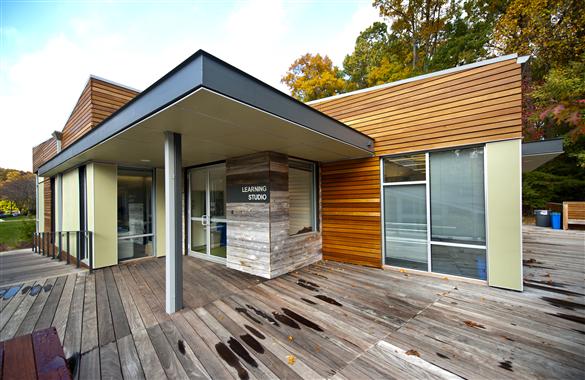Whether the new building you have in mind will be permanent or relocatable, modular construction opens up a world of cost-effective, innovative, and green possibilities.
Buildings are very hard on the environment. According to the Environmental Protection Agency, American buildings are responsible for 68% of our total electricity consumption, 38% of carbon dioxide emissions, and 12% of total water consumption. By 2025, buildings are expected to be the largest emitters of greenhouse gases on the planet.

Consider both the economic and environmental benefits of modular construction:
- Quality Control – The modular construction process is precise, with accurate measurements to minimize waste and regular quality inspections throughout. Materials are carefully monitored and safely and securely stored, something that’s not easy to do on an exposed jobsite.
- Cost/Time Savings – The modular building process reduces design and construction costs by 20% to 40% and cuts the construction timeline in half. Building “modules” are manufactured off-site in a factory, transported by truck to the construction site, and dropped into place by crane, shaving months off of the entire process.
- Innovative Design Capability – Built of steel, concrete and wood, like conventional buildings, modular buildings can be designed to blend in aesthetically with existing structures. State-of-the-art 3-D and 4-D design capabilities make them suitable for a wide range of residential, commercial and industrial uses, both temporary and permanent.
- Sustainability– Modular buildings are typically built with recycled steel and sustainably sourced timber. The modules are tighter and more energy efficient and feature improved indoor air quality controls. Relocatable buildings can be disassembled and moved to meet different needs, minimizing the demand for new raw building materials.
- LEED Compatible– Modular buildings compete in the same Leadership in Energy & Environmental Design (LEED) categories as conventionally built structures.
How durable are they? Most relocatable modular buildings will last about 20 years with proper maintenance, while those built as permanent structures typically last at least 60 years. When they have served their purpose, they can be recycled, maximizing your return on your investment.
Modular buildings can fill the need for permanent apartment buildings, complete school campuses, office buildings, healthcare facilities, churches, museums, banks, retail and recreational space, and many different special applications.
Relocatable buildings are ideal for use as on-site construction offices, classrooms, medical clinics and labs, temporary housing, stand-alone fitness and recreational facilities, and detention facilities, to name just a few.
Award-winning modular builders demonstrate the architectural excellence and technical innovation in the modular building industry today. Take a look at a recent project, the LEED-qualified Design Build modular campus by Modular Genius, for inspiration.
As you can see, modular buildings are virtually indistinguishable from stick-built structures and can be designed to complement nearby buildings and the environment around them with exterior finishes such as brick, stucco, and vinyl siding, as well as custom architectural features.
Customers who opt for modular construction can enhance their buildings with eco-friendly insulation, energy-efficient utilities and low-VOC or no-VOC floor and wall treatments to reduce the building’s environmental impact. High-performance products, such as dual pane windows, acrylic skylights, motion-controlled light fixtures, sealed lightweight concrete floors, and sprayed polyurethane roofs can be incorporated to help reduce the project’s carbon footprint.
For a distinctive, efficient and cost-effective alternative to stick-built construction, modular construction could be the greener, faster and smarter solution you need.
